
The global online marketplace has been steadily growing over time in prominence and volume. As a modern consumer expectation, its importance to businesses in any industry can not be overstated. According to data collected from Statista, online shopping revenue will exceed $1.7 trillion by 2027, and will continue to grow dramatically as e-commerce rises across the world in terms of accessibility and affordability. With such a vast market, players in various e-commerce industries continue to innovate more by the day, attempting to become viable options for their competitors’ customers. As a result, firms are increasingly finding themselves facing larger customer churn rates (the rate at which customers stop doing business with a company over time). However, by implementing the right strategies and tactics, companies can continue to beat their e-commerce competitors by deploying the best customer service possible to keep customers satisfied and ensure they continue to do business.
Before choosing specific tactics and tools to improve customer support in an e-commerce business, it is vital to form an overarching strategy and approach to create a foundation for future success.
As with many elements of business, a successful e-commerce strategy takes a customer-centric approach.
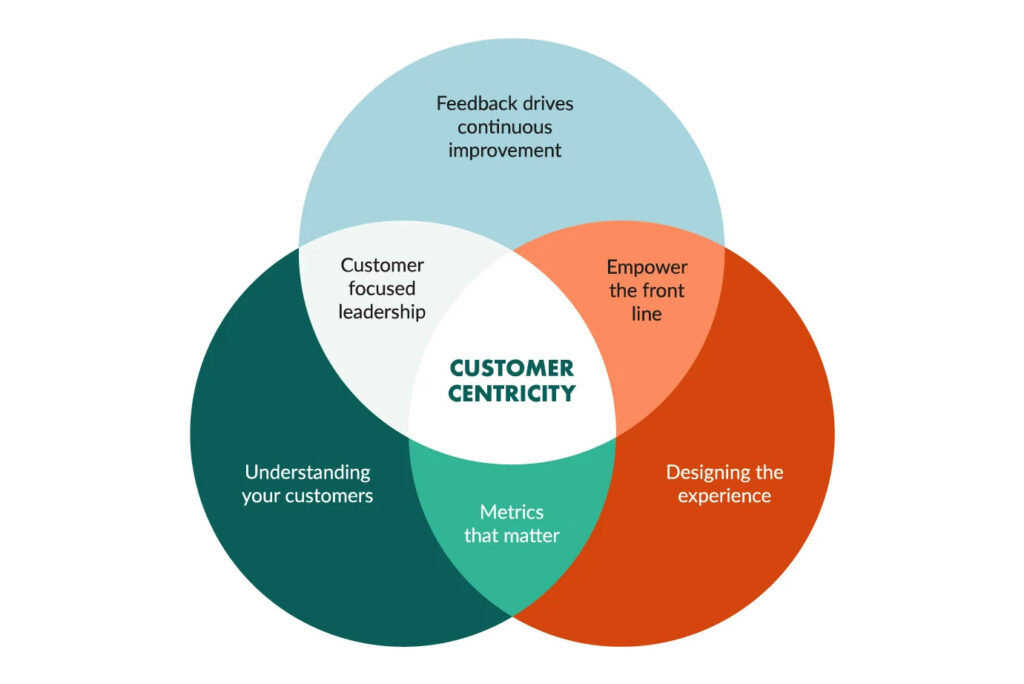
Source: superoffice.com
Analyzing your online store from the perspective of shoppers is an essential task for every digitized company.
So what does it take to create a consumer-oriented customer service experience? Businesses need to address a series of key values which every customer expects to be met:
Working to incorporate these values into all digitized business processes will increase customer lifetime value and customer satisfaction rates.
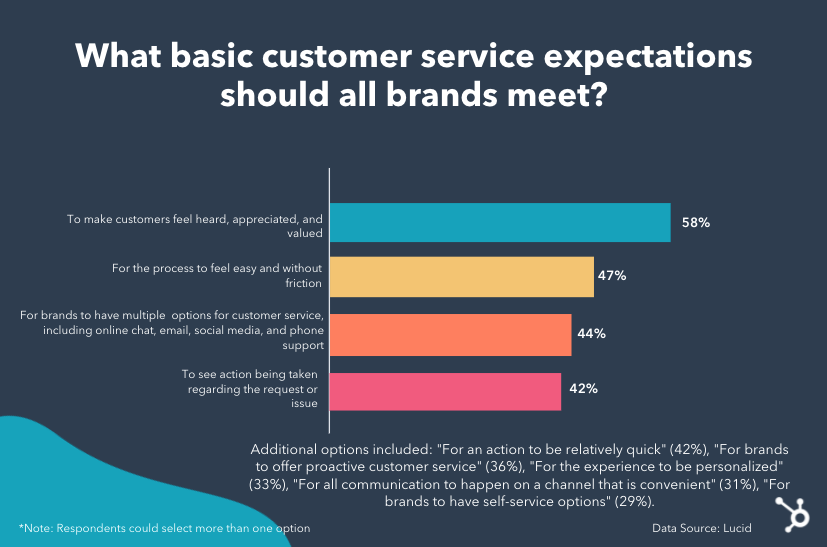
Source: blog.hubspot.com
Although there are many more steps to beating your competitors, providing good customer service has to start with a strong foundation and a correct mindset at the highest levels. Only after pivoting to reflect these values will tools prove to be effective methods of improving customer service. But what exactly are business processes that top companies are using to improve their customer satisfaction?
Staying ahead of the competition means choosing the tools that best fit and support your business as it navigates the digital market.
When deliberating over the most effective channels of communication for customer service, it is vital to consider the demographics and needs of your target consumer. When it comes to customer service, an organization should choose a consumer-centric strategy to offer a seamless customer experience. The graphic below shows examples of various channels and the customer service satisfaction they received.
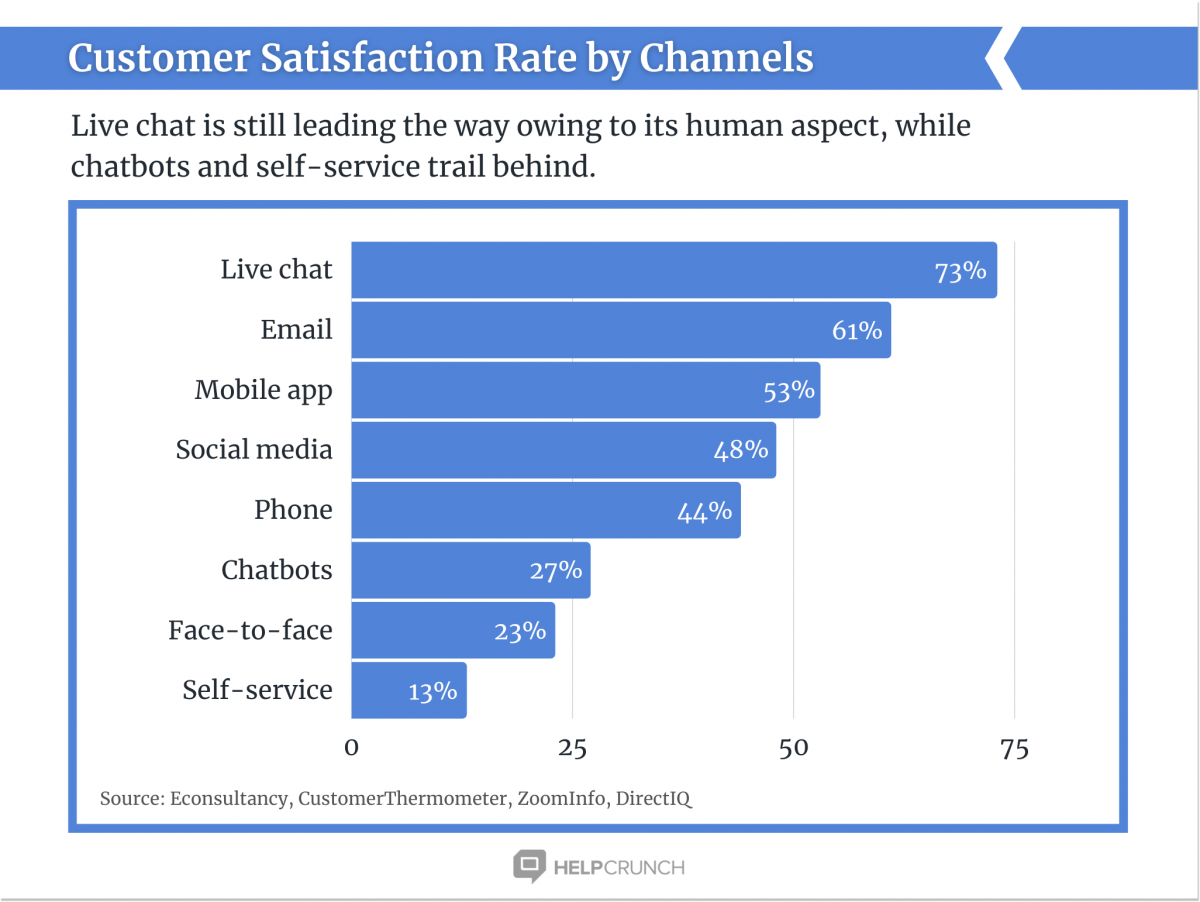
Source: helpcrunch.com
The first tool or channel of communication is live chat, which is an online communication that allows customers to chat with a customer service representative or chatbot in real time. Live chat is becoming more and more popular as an alternative to phone support, especially as more Gen Z shoppers enter the market. Online shopping and e-commerce are attracting the likes of younger, tech-savvy consumers. Therefore, a live chat should be something implemented in most e-commerce platforms.
Another commonly used channel is email. Email should be used primarily for managing customer support. Unlike a live chat, email allows customers to take their time and respond when they are available. Therefore, this channel gives businesses and customers time to respond in a more mindful and strategic manner. Email is the most versatile form of communication because it is used by virtually all generations from Baby Boomers to Gen Z.
A newer channel that is being used by e-commerce platforms is social media. Social media is popular with Millennials and Gen Z customers and allows for the effective marketing of products and even fosters consumer feedback. However, the downside of social media is that it could lead to negative consumer interactions that may shine a bad light on the company. Nonetheless, social media has become one of the most useful and engaging channels of communication. Businesses are able to reach a large audience with the click of a button, meaning the return on investment of a social media team is enormous.
A relatively old-school channel is the use of phone calls. Phone calls are a great way to keep up with customer demand in larger companies. Phone support resolves issues in an efficient manner and offers person-to-person interaction, which is one of the best consumer service practices. Oftentimes, customers use phone calls if they are seeking immediate assistance. Therefore, this channel of communication should be run by qualified staff who have been trained in customer service practices. Additionally, phone calls give an e-commerce platform a more human-like experience. In the virtual marketplace, having a welcoming voice to associate with the platform can immensely alter a customer’s perception.
The final channel of communication is SMS. According to Gorgias, “72.6% of internet users will access the web exclusively from mobile devices by 2025.” SMS offers similar advantages to live chat in the way that it allows businesses to assist customers in real-time from their phone messaging system instead of over phone support. SMS is one of the more reliable channels of communication because it is convenient for the customer and e-commerce business. Furthermore, almost all generations use cell phones and SMS messaging since it is crucial to communication in today’s society. Therefore, SMS is a familiar and comfortable way for customers to communicate.
Helpdesk
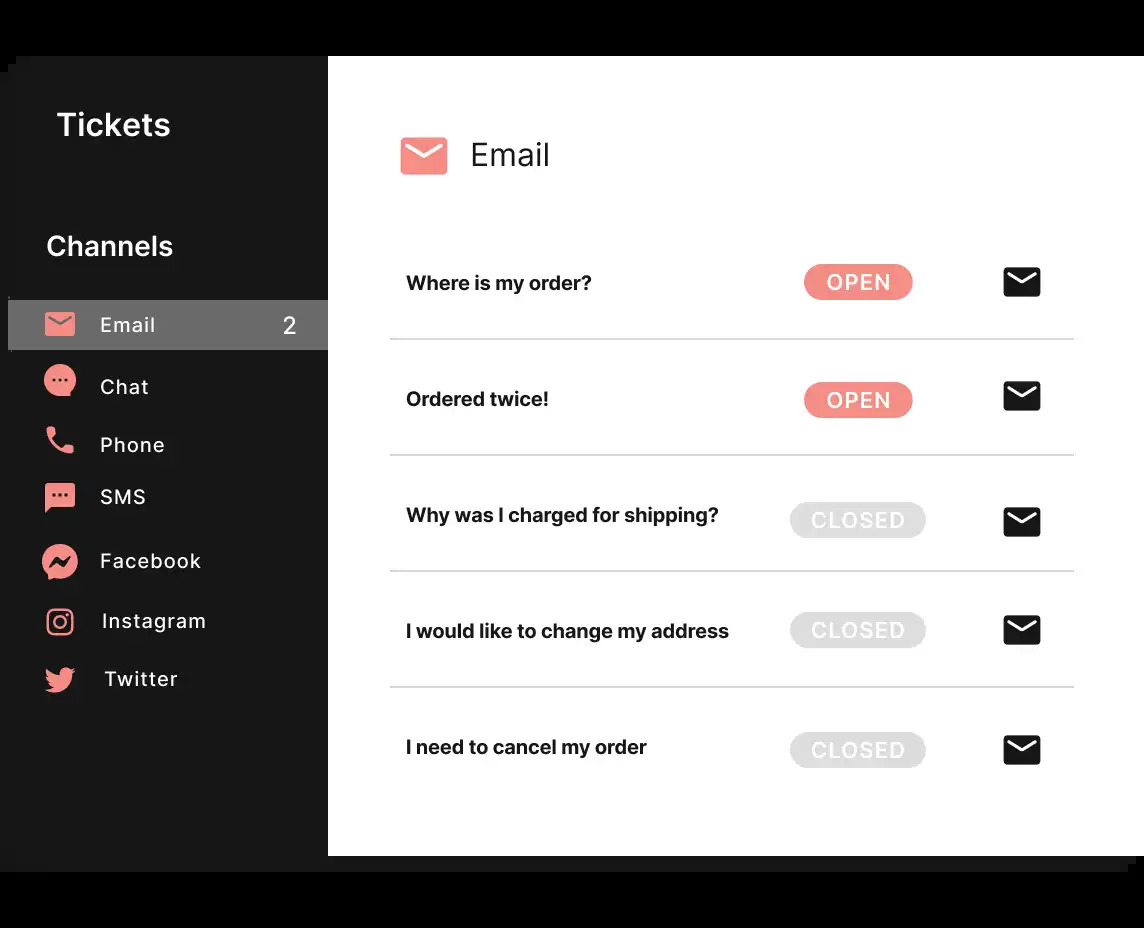
Source: gorgias.com
As previously stated, there are numerous tools or channels of communication that are used in a successful, consumer-centric e-commerce platform. However, successful e-commerce customer service requires multiple channels and something to unify these channels. One of the most effective ways to unify multiple channels is a helpdesk. A helpdesk is an omnichannel platform that can pull information from a variety of sources. As seen in the example helpdesk in the graphic below, a helpdesk is important to the customer experience because a business can stay on top of all communications.
Chatbots
Chatbots can unify channels of communication in e-commerce customer service by delivering a personalized experience across a wide roange of channels. One chatbot can be deployed over multiple channels to interact with consumers in a quick, efficient manner. The graphic below shows the benefits of chatbots across two opposite generations. Again, it is vital to keep the demographics and needs of the consumer in mind.
Selecting an E-Commerce Customer Service Chatbot
For businesses wanting to find the optimal solution to unify their multi-channel digital storefront, PerfectBot is a human-like chatbot specifically built for e-commerce. It correctly resolves a majority of customers’ problems before they even reach the helpdesk, freeing up time for employees to focus on higher-level customer service improvements. PerfectBot understands customers and delivers personalized messages in an omnichannel setting while being extremely easy to set up. Implementing PerfectBot is a great way to maximize customer satisfaction and drastically increase customer retention and lifetime value. Calculate the savings PerfectBot can bring to your business and read more about the benefits our chatbot generates by visiting our website.
Predictive analytics; the use of data, statistical algorithms, and machine learning techniques to discern the probability of future outcomes based on historical data; can be an important tool in facilitating the best customer service in e-commerce, as analytics helps support and facilitate the customer personalization that separates e-commerce businesses from their competitors. Customers prefer to feel as if there is someone guiding them to the correct choice during the customer journey, and they want their shopping experience tailored towards them, as this creates a connection between them and the company. According to a 2018 PwC study, 75% of consumers prefer human interactions, which shows how important personalization can be for online businesses.
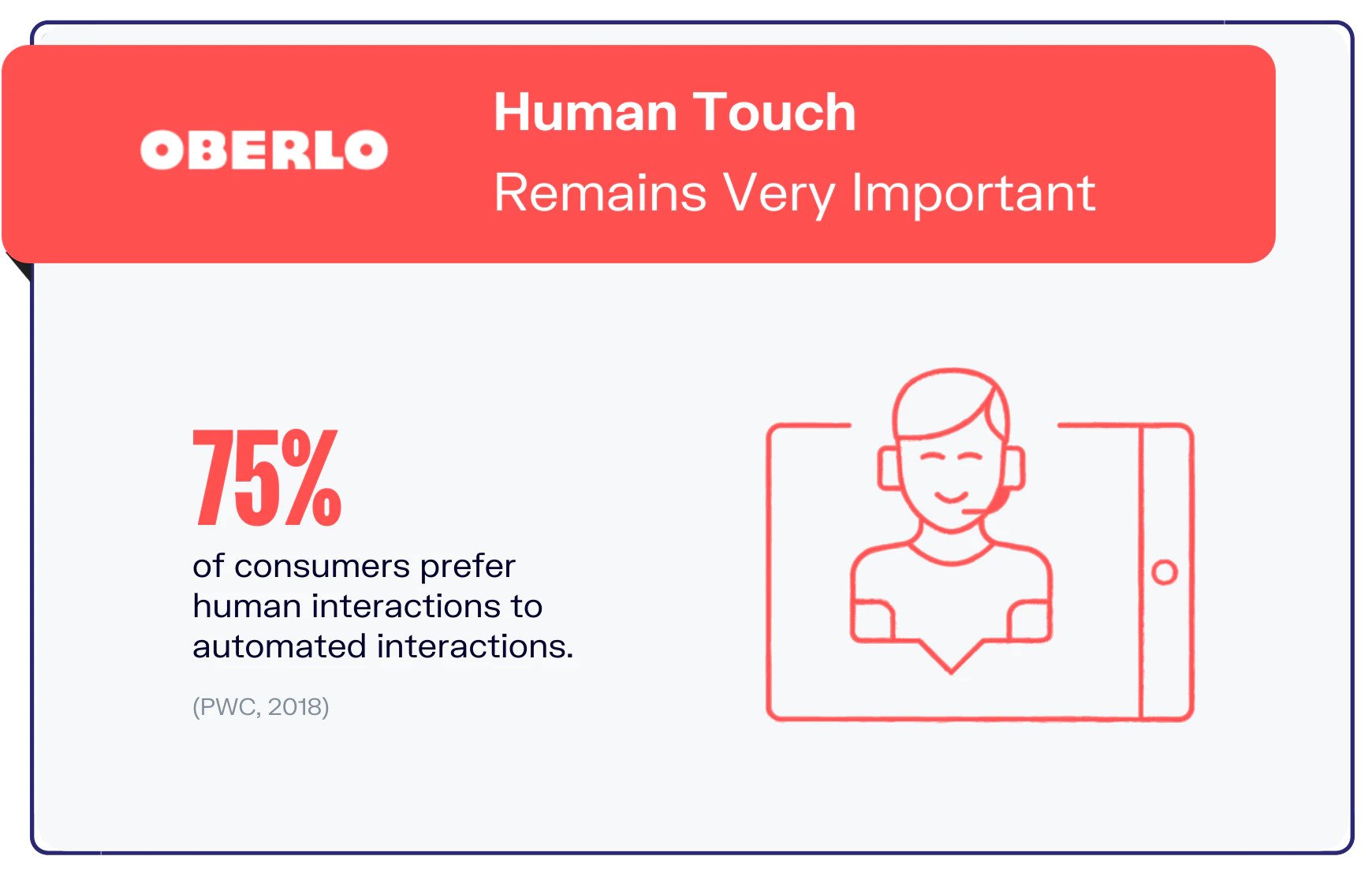
Source: oberlo.com
There are several strategies and best practices that can be used to facilitate the development of personalization. For example, integrating inventory data into help desk resources can be a powerful tool to promote customer personalization. E-commerce businesses can find themselves quickly losing customers if they do not pay attention to shopping cart abandonment. To ensure customer retention and prevent abandonment, e-commerce businesses must show customers that help is provided in a timely and case-based manner. Integrating inventory and product details into a helpdesk can ensure that case data is collected and utilized per each customer, allowing representatives to provide personalized help with product and customer details. The graphic below shows some of the key benefits of personalization.
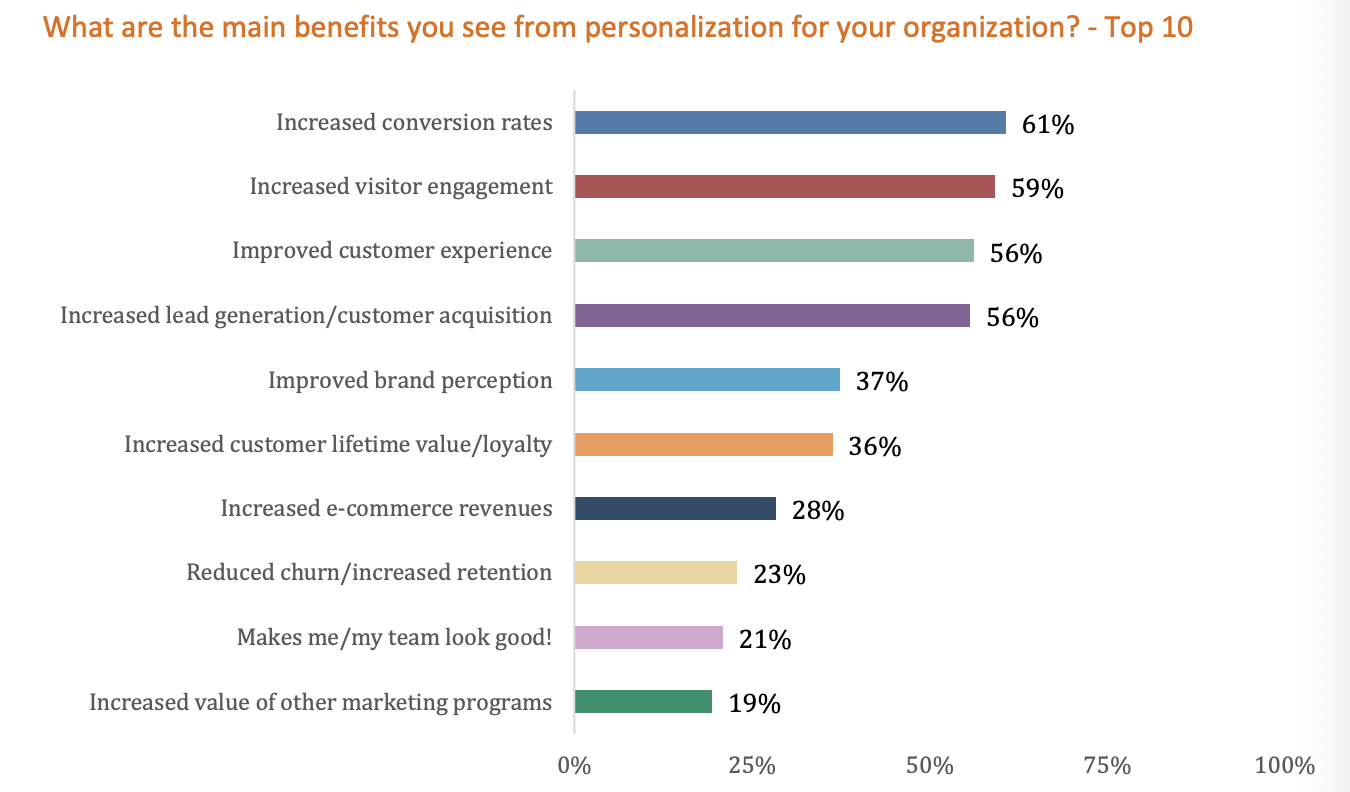
Source: cxl.com
Additionally, to ensure that customer service representatives and customer service agents are able to respond with personalization quickly, they must be presented with a unified view of multiple channels. Customer service representatives must be supplied with all of the necessary information to successfully do their job, including outstanding orders, what has already been said, any prior help, product details, etc. By providing these details, a proactive customer service representative can quickly resolve outstanding issues and prevent angry customers from delivering harsh customer feedback and leaving the e-commerce business. This unified omnichannel view also helps in delivering customer personalization as representatives are fully equipped to work with customers on an individual basis and ensure they feel more personally valued.
Finally, excellent customer service across multiple customer service channels requires personalized responses by a customer support team that contains accurate data. By integrating inventory management, order management, shipping software, and an e-commerce platform all in one for a customer service team, they can quickly meet customer expectations and provide them with exceptional customer service that includes the personalized responses that customers expect. This level of attention to detail through communication channels can have a massive impact on an e-commerce customer, and online shoppers will likely find themselves with more brand loyalty and become repeat customers.
According to a Statista study done in 2018, 66% of customers find that excellent customer service is „very important” in regards to brand loyalty, showing how important a successful customer service strategy is for a customer support team. As such, to ensure that quality customer service is provided, e-commerce companies should utilize customer reviews and customer service metrics.
Customer reviews and customer service metrics can be extremely helpful data points used by companies to successfully accrue customer feedback and ensure a customer service team has the data they require to provide great customer service for online shoppers. A customer service team should have access to important metrics such as average response time, support quality level, negative social media comments, and tickets created by channel (i.e. mobile devices.) These metrics act as indicators along with customer reviews on service and products, as they provide a clear picture of the level of e-commerce customer service provided to assist customers, customer loyalty levels, customer expectations, and customer satisfaction. An e-commerce business should set monthly benchmarks for these important metrics and ensure that they are met on time and in an efficient manner, as online businesses can quickly suffer if their e-commerce customer service team has a poor customer service approach that results in little customer satisfaction.
To overcome competitors, e-commerce companies should employ customer service best practices, such as creating a strategy for success, utilizing the right tools, and facilitating personalization through the use of analytics to ensure that an e-commerce customer receives the best possible customer service they can. In an era of competition and access to more resources than ever, online businesses can quickly fall behind others as customers are impressed with lower prices or more reviews. It is the companies that recognize the importance of customer service above all else that will succeed the most.

Can any chatbot ever really replicate the live chat experience? If not, could a thoughtful combination of the two provide the best aspects of both? In this article, we’ll present both solutions in more detail.
Read more
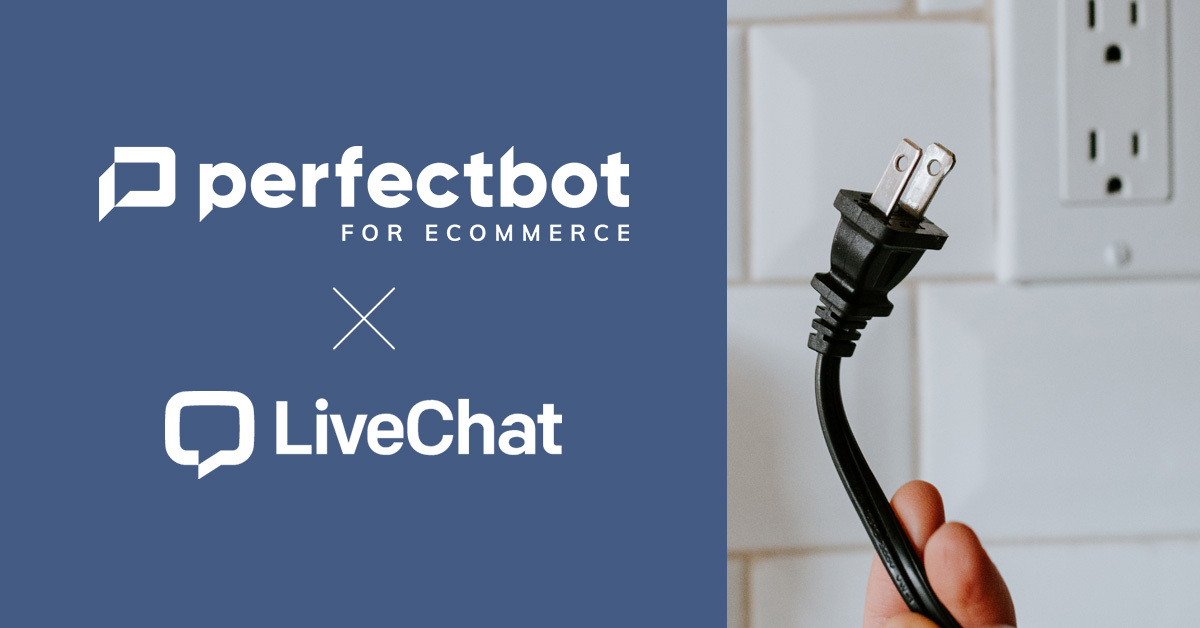
Install „PerfectBot for eCommerce” Demo App in your LiveChat and test how easily you can automate customer service in your eCommerce. Use 250+ LiveChat automations built specifically for your eCommerce category and save months on training your AI Chatbot.
Read more
Chatbot tailored for
customer service in Fashion
The highest
resolution rate
Ready
in 2 weeks